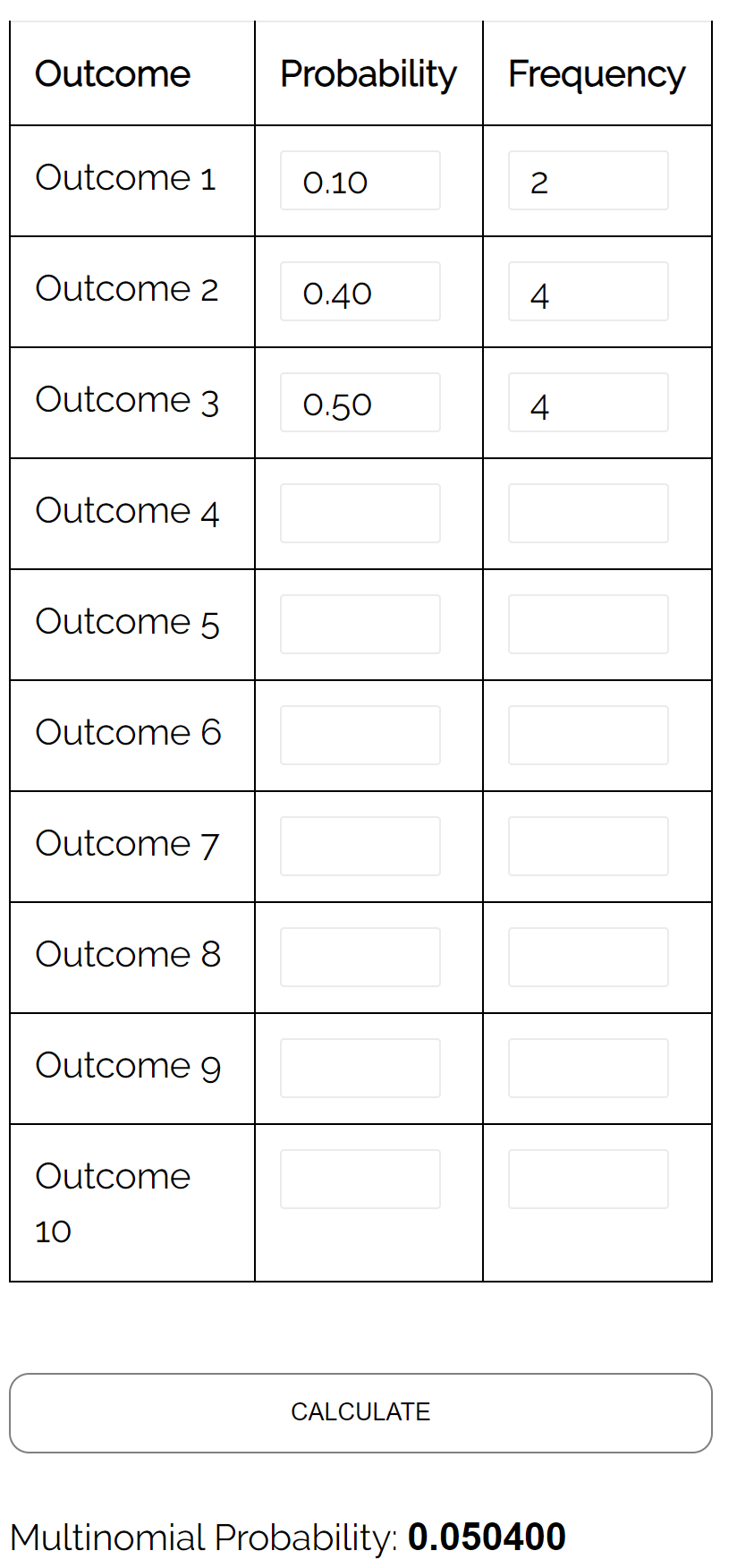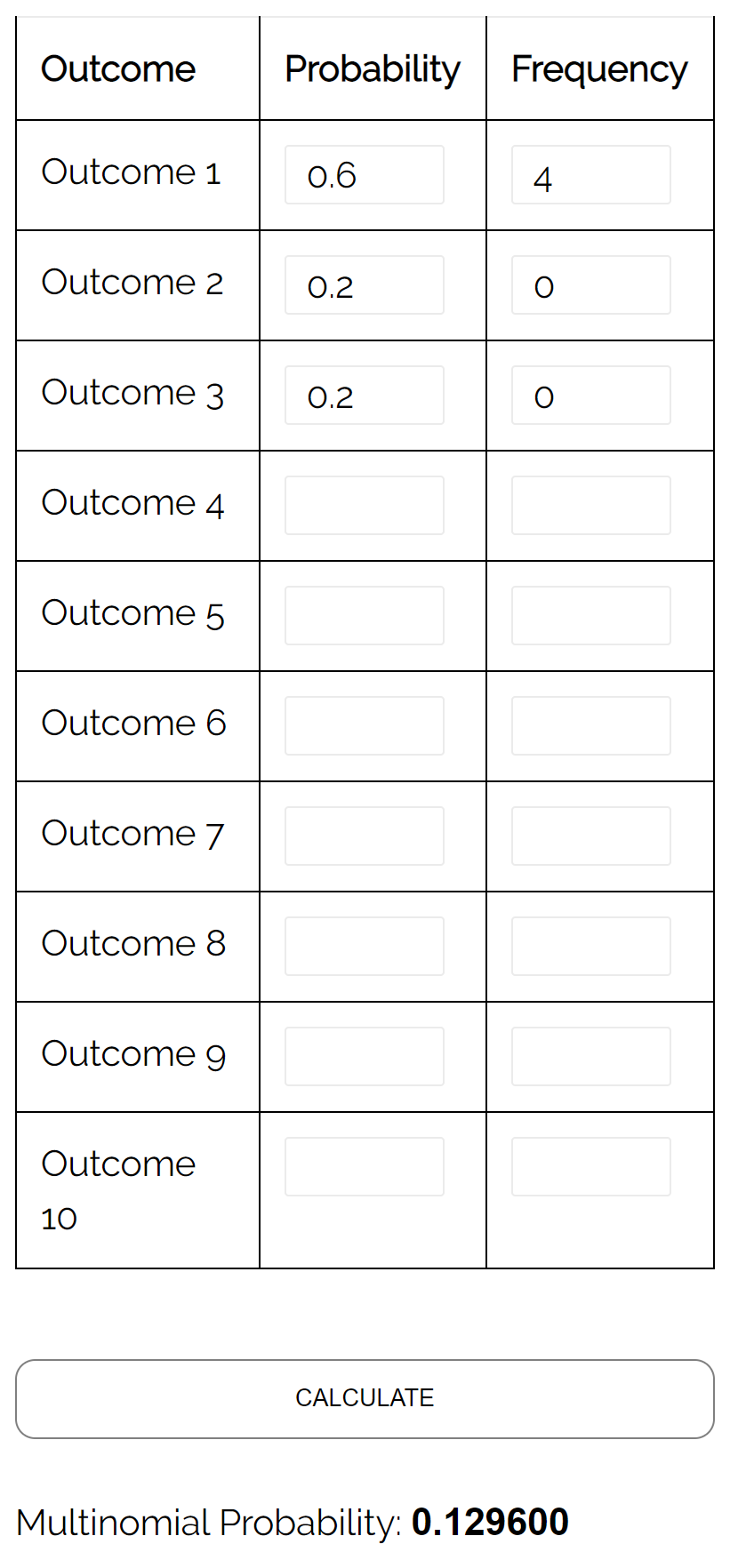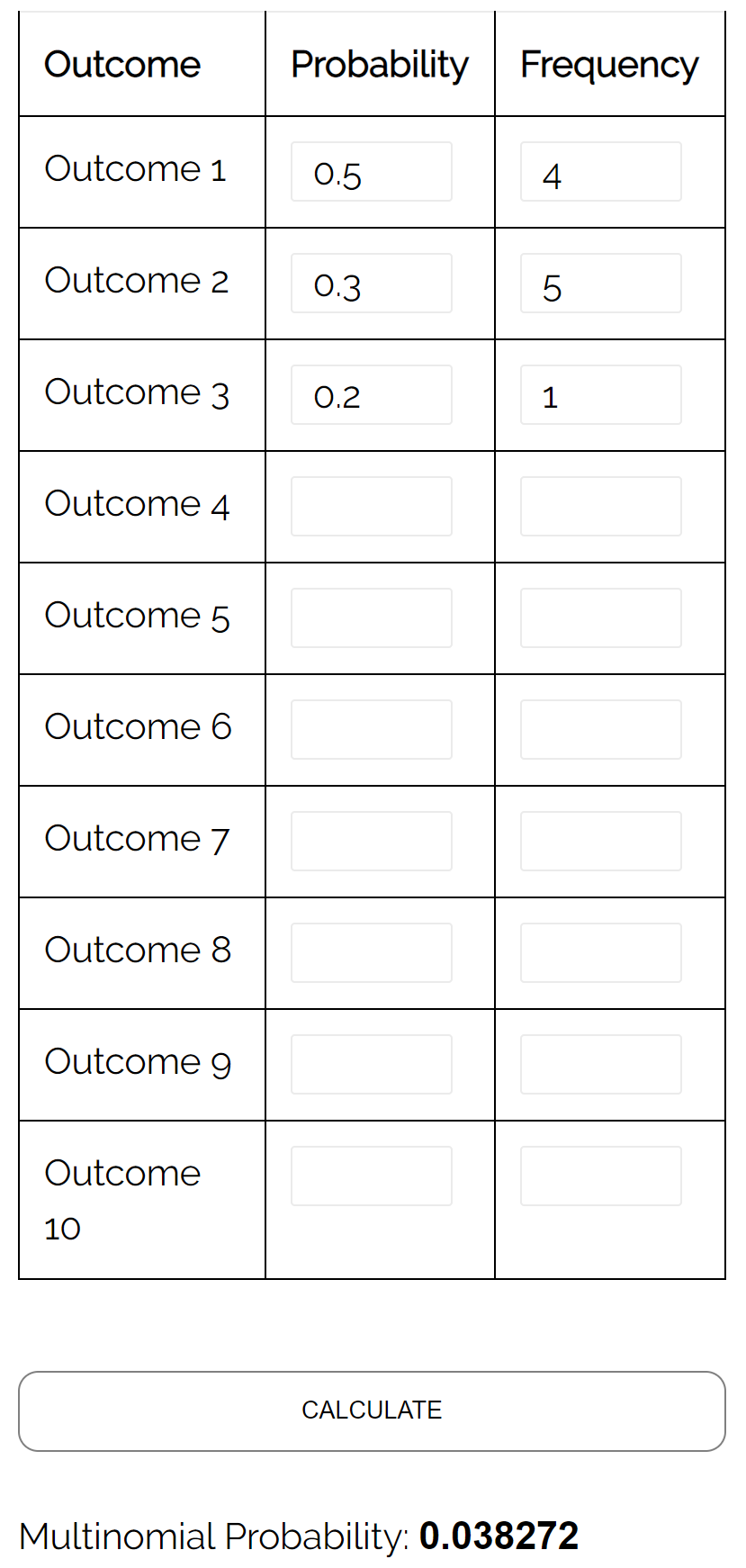The multinomial distribution describes the probability of obtaining a specific number of counts for k different outcomes, when each outcome has a fixed probability of occurring.
If a random variable X follows a multinomial distribution, then the probability that outcome 1 occurs exactly x1 times, outcome 2 occurs exactly x2 times, outcome 3 occurs exactly x3 times etc. can be found by the following formula:
Probability = n! * (p1x1 * p2x2 * … * pkxk) / (x1! * x2! … * xk!)
where:
- n: total number of events
- x1: number of times outcome 1 occurs
- p1: probability that outcome 1 occurs in a given trial
For example, suppose there are 5 red marbles, 3 green marbles, and 2 blue marbles in an urn. If we randomly select 5 marbles from the urn, with replacement, what is the probability of obtaining exactly 2 red marbles, 2 green marbles, and 1 blue marble?
To answer this, we can use the multinomial distribution with the following parameters:
- n: 5
- x1 (# red marbles) = 2, x2 (# green marbles) = 2, x3 (# blue marbles) = 1
- p1 (prob. red) = 0.5, p2 (prob. green) = 0.3, p3 (prob. blue) = 0.2
Plugging these numbers in the formula, we find the probability to be:
Probability = 5! * (.52 * .32 * .21) / (2! * 2! * 1!) = 0.135.
Multinomial Distribution Practice Problems
Use the following practice problems to test your knowledge of the multinomial distribution.
Note: We will use the Multinomial Distribution Calculator to calculate the answers to these questions.
Problem 1
Question: In a three-way election for mayor, candidate A receives 10% of the votes, candidate B receives 40% of the votes, and candidate C receives 50% of the votes. If we select a random sample of 10 voters, what is the probability that 2 voted for candidate A, 4 voted for candidate B, and 4 voted for candidate C?
Answer: Using the Multinomial Distribution Calculator with the following inputs, we find that the probability is 0.0504:

Problem 2
Question: Suppose an urn contains 6 yellow marbles, 2 red marbles, and 2 pink marbles. If we randomly select 4 balls from the urn, with replacement, what is the probability that all 4 balls are yellow?
Answer: Using the Multinomial Distribution Calculator with the following inputs, we find that the probability is 0.1296:

Problem 3
Question: Suppose two students play chess against each other. The probability that student A wins a given game is 0.5, the probability that student B wins a given game is 0.3, and the probability that they tie in a given game is 0.2. If they play 10 games, what is the probability that player A wins 4 times, player B wins 5 times, and they tie 1 time?
Answer: Using the Multinomial Distribution Calculator with the following inputs, we find that the probability is 0.038272:

Additional Resources
The following tutorials provide an introduction to other common distributions in statistics:
An Introduction to the Normal Distribution
An Introduction to the Binomial Distribution
An Introduction to the Poisson Distribution
An Introduction to the Geometric Distribution